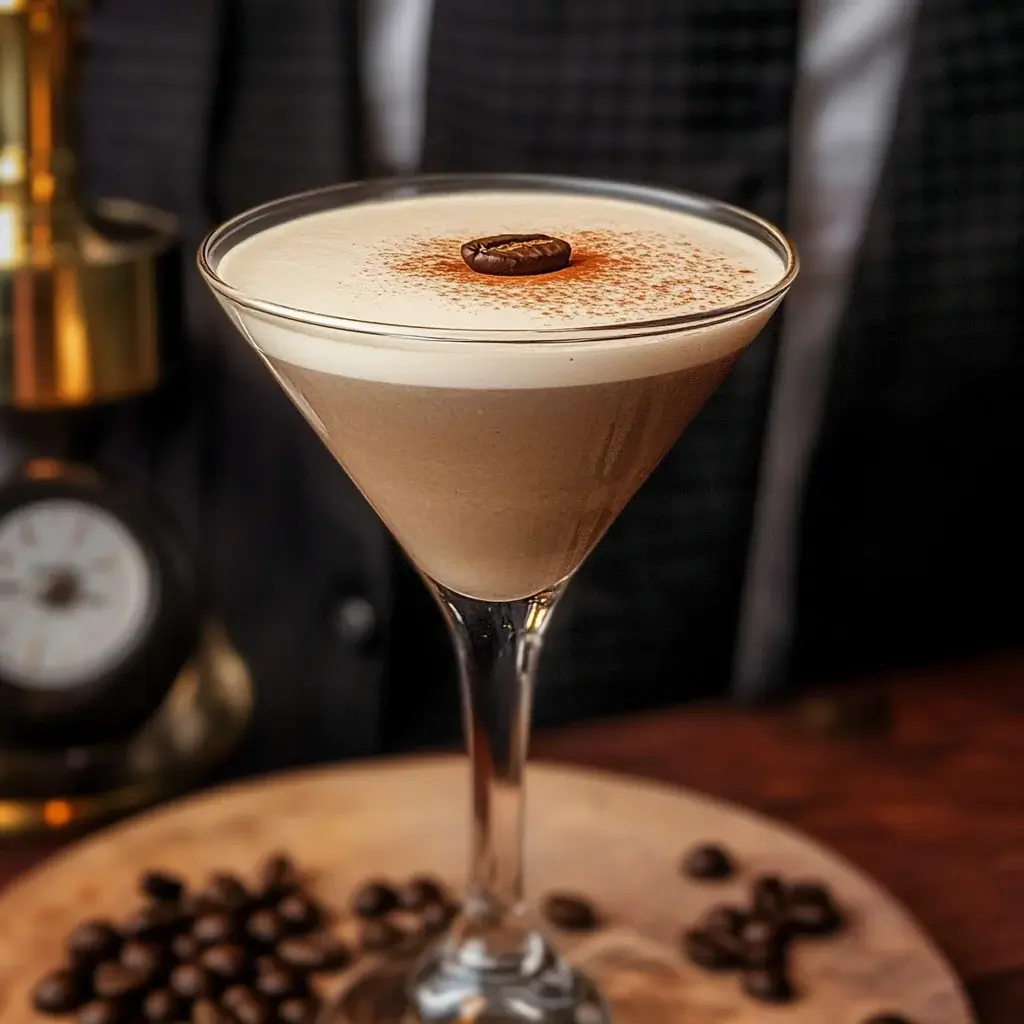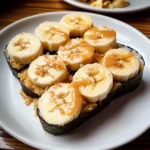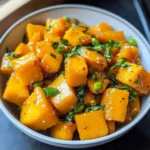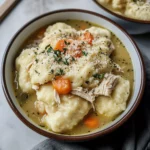Let me tell you, finding a sophisticated and genuinely satisfying non-alcoholic cocktail can sometimes feel like searching for a unicorn. So many “mocktails” fall flat, missing that complex flavor profile and grown-up vibe we crave when we’re opting for sobriety. That was until I stumbled upon this Non-Alcoholic Espresso Martini recipe. Initially, I was skeptical – could a booze-free version really capture the magic of the original? The answer, unequivocally, is yes! My family, a tough crowd when it comes to drinks, absolutely adored it. From the rich, dark coffee notes to the creamy sweetness and that signature foamy top, this mocktail is a triumph. It’s become our go-to for evening gatherings, sophisticated brunch alternatives, and even just a special treat after a long day. If you’re looking for a drink that’s both elegant and invigorating, without the alcohol, prepare to be amazed. This Non-Alcoholic Espresso Martini is about to become your new favorite indulgence.
Ingredients: The Key to a Perfect Non-Alcoholic Espresso Martini
Crafting the perfect Non-Alcoholic Espresso Martini hinges on selecting high-quality ingredients that mirror the complexity and depth of its alcoholic counterpart. Each component plays a crucial role in achieving the desired flavor, texture, and overall experience. Here’s a detailed breakdown of what you’ll need:
- Strong Brewed Espresso or Coffee (Chilled): The heart and soul of this mocktail is, without a doubt, the coffee. Forget instant coffee – for a truly exceptional Non-Alcoholic Espresso Martini, you need freshly brewed, strong espresso or an intensely brewed coffee. Espresso, with its concentrated flavor and rich crema, is the gold standard, providing that robust coffee kick we expect. If you don’t have an espresso machine, don’t worry! You can achieve a similar depth of flavor by using a French press or Aeropress to brew your coffee extra strong. Consider using a dark roast coffee bean for a bolder flavor profile that will stand up well in the cocktail. Crucially, ensure your coffee is thoroughly chilled before you begin mixing. Warm coffee will dilute the drink and compromise its refreshing, icy character. Brew your coffee ahead of time and allow it to cool completely in the refrigerator. For an even more intense coffee flavor, you can even consider using cold brew coffee concentrate as your base. Cold brew is naturally less acidic and boasts a smooth, rich coffee flavor that works beautifully in this mocktail.
- Non-Alcoholic Coffee Liqueur: This is the secret weapon that truly elevates this mocktail and makes it taste incredibly close to the real deal. Non-alcoholic coffee liqueur replicates the sweet, coffee-infused depth of traditional coffee liqueurs like Kahlúa or Tia Maria, but without the alcohol content. Several brands now offer excellent non-alcoholic coffee liqueurs, often made with real coffee extracts and natural sweeteners. Look for brands that prioritize quality and flavor over artificial ingredients. These liqueurs not only contribute sweetness and coffee complexity but also add a crucial element of body and richness to the drink, mimicking the texture of alcoholic liqueurs. Experiment with different brands to find one that suits your taste preferences. Some may be sweeter, while others might have a more pronounced coffee or even chocolate note.
- Simple Syrup: Sweetness is essential to balance the bitterness of the coffee and create a harmonious flavor profile. Simple syrup, a basic mixture of equal parts sugar and water, is the perfect sweetener for cocktails and mocktails as it dissolves seamlessly and doesn’t leave any grainy texture. You can easily make simple syrup at home by heating sugar and water together until the sugar dissolves completely, then allowing it to cool. For a richer flavor, consider using demerara sugar or brown sugar to make your simple syrup. You can also infuse your simple syrup with flavors like vanilla, cinnamon, or even a hint of chili for a more complex and unique twist on your Non-Alcoholic Espresso Martini. For those watching their sugar intake, you can substitute traditional simple syrup with sugar-free alternatives. Erythritol or stevia-based syrups can work well, but be mindful of the sweetness level as these sweeteners can sometimes be more intense than sugar. Adjust the amount of sugar-free syrup to your preference.
- Water: While it might seem counterintuitive to add water to a drink, a splash of cold water is essential for achieving the right consistency and dilution in a Non-Alcoholic Espresso Martini. It helps to balance the intensity of the coffee and liqueur, creating a smoother, more drinkable mocktail. The ice used in shaking will also contribute to dilution, but adding a small amount of water directly into the shaker ensures the drink isn’t overly thick and syrupy. Use filtered water for the best taste, especially if your tap water has a strong chlorine flavor.
- Ice: Ice is absolutely crucial for chilling and diluting the Non-Alcoholic Espresso Martini. Use plenty of good quality ice cubes. Large ice cubes are preferable as they melt slower, keeping your drink colder for longer and diluting it less rapidly. If you have access to it, consider using cocktail ice – these are large, dense ice cubes specifically designed for cocktails and mocktails. The vigorous shaking with ice is what creates that signature frothy top, so don’t skimp on the ice!
- Optional Garnishes: Garnishes are the finishing touch that elevates your Non-Alcoholic Espresso Martini from a simple drink to a sophisticated cocktail experience. While optional, they are highly recommended for both visual appeal and subtle flavor enhancement.
- Coffee Beans: The classic garnish for an Espresso Martini is three coffee beans, typically placed on top of the foam. These not only look elegant but also release a subtle coffee aroma as you sip the drink. Use high-quality, whole roasted coffee beans. For an extra touch, you can lightly roast the beans in a dry pan for a few minutes to enhance their aroma.
- Chocolate Shavings: Dark chocolate shavings offer a beautiful visual contrast against the creamy foam and complement the coffee flavors perfectly. Use good quality dark chocolate and shave it using a vegetable peeler or a grater.
- Cocoa Powder: A light dusting of cocoa powder adds a subtle chocolatey aroma and a touch of bitterness that balances the sweetness of the drink. Use unsweetened cocoa powder for the best results.
- Orange Peel Twist: For a citrusy twist, express the oils from an orange peel twist over the drink and then use it as a garnish. The citrus notes brighten up the coffee flavor and add a layer of complexity.
- Star Anise: For a more festive or spiced variation, a single star anise pod can be placed on top of the foam. It adds a subtle licorice aroma and a visually striking garnish.
By carefully selecting and preparing each of these ingredients, you’ll be well on your way to crafting a truly exceptional Non-Alcoholic Espresso Martini that rivals the alcoholic version in flavor and sophistication.
Instructions: Step-by-Step to a Perfect Non-Alcoholic Espresso Martini
Creating a flawless Non-Alcoholic Espresso Martini is surprisingly simple and quick. Follow these detailed step-by-step instructions to ensure cocktail perfection every time:
- Chill Your Glass: Start by chilling your martini glass (or coupe glass) in the freezer for at least 15 minutes, or even longer. A chilled glass is essential for keeping your mocktail cold and refreshing for longer, enhancing the overall drinking experience. If you don’t have freezer space, you can fill the glass with ice while you prepare the drink and then discard the ice just before pouring.
- Prepare Your Shaker: Fill a cocktail shaker completely full with ice. The amount of ice is crucial for achieving the right level of chill and dilution. Using enough ice will ensure your mocktail is perfectly cold and that the shaking process creates that signature frothy top.
- Add Ingredients to Shaker: Pour the chilled strong brewed espresso or coffee, non-alcoholic coffee liqueur, and simple syrup into the ice-filled shaker. Ensure you measure the ingredients accurately for the best flavor balance. Adding water at this stage is also recommended – a tablespoon or two will help with dilution and texture.
- Shake Vigorously: This is the most important step for creating that iconic frothy top. Securely close the lid of the shaker and shake vigorously for 15-20 seconds. Shake hard! You want to thoroughly chill the drink and incorporate air, which creates the foam. You should feel the shaker becoming very cold in your hands. A good shake is the key to a great texture and appearance.
- Double Strain into Chilled Glass: Double straining is essential for achieving a smooth, elegant Non-Alcoholic Espresso Martini. Place a Hawthorne strainer (the standard cocktail strainer) over the shaker and then place a fine-mesh sieve over your chilled martini glass. Pour the contents of the shaker through both strainers into the glass. The Hawthorne strainer will catch the larger ice pieces, while the fine-mesh sieve will catch any smaller ice shards and coffee grounds, ensuring a perfectly smooth and clear drink with a beautiful, velvety foam on top. Double straining is what separates a professionally made cocktail from an amateur one.
- Garnish and Serve Immediately: Garnish your Non-Alcoholic Espresso Martini immediately after pouring. The classic garnish is three coffee beans, carefully placed on top of the foam. Alternatively, you can use chocolate shavings, cocoa powder, an orange peel twist, or a star anise pod, as described in the ingredients section. Serve your beautifully garnished Non-Alcoholic Espresso Martini immediately while it’s still perfectly chilled and frothy. The foam will slowly dissipate over time, so it’s best enjoyed fresh.
Following these simple yet precise instructions will guarantee you a Non-Alcoholic Espresso Martini that is not only delicious but also visually stunning, perfect for impressing guests or simply treating yourself to a sophisticated alcohol-free indulgence. Practice makes perfect, but this recipe is so straightforward that you’ll likely nail it on your very first try!
Nutrition Facts: A Guilt-Free Indulgence
Understanding the nutritional profile of your Non-Alcoholic Espresso Martini can help you enjoy it guilt-free, especially if you are mindful of your calorie and sugar intake. Please note that these are approximate values and can vary slightly depending on the specific brands and ingredients used.
- Servings: This recipe is typically designed to make one generous serving. You can easily scale up the recipe to make multiple servings for gatherings.
- Calories per Serving (Approximate): A single serving of Non-Alcoholic Espresso Martini typically contains around 150-250 calories. The calorie count primarily comes from the non-alcoholic coffee liqueur and the simple syrup. Using sugar-free simple syrup and a lower-calorie non-alcoholic liqueur can significantly reduce the calorie content.
- Sugar (Approximate): The sugar content will vary depending on the amount of simple syrup and the sweetness of the non-alcoholic coffee liqueur used. A typical serving may contain approximately 20-30 grams of sugar. Again, using sugar-free alternatives can drastically reduce the sugar content, making it a more diet-friendly option.
- Fat: Non-Alcoholic Espresso Martinis are generally low in fat, containing minimal amounts, primarily from trace amounts in coffee and liqueur. The fat content is negligible.
- Sodium: Sodium content is also very low in this mocktail.
- Caffeine (Approximate): The caffeine content will depend on the type and strength of coffee used. Using decaffeinated espresso or coffee will result in a caffeine-free mocktail. If using regular coffee, a single serving may contain approximately 50-100mg of caffeine, similar to a cup of coffee. Be mindful of this if you are sensitive to caffeine or planning to enjoy this drink in the evening.
Compared to a traditional alcoholic Espresso Martini, the non-alcoholic version is often lower in calories and, of course, contains no alcohol. By making smart ingredient choices, such as opting for sugar-free syrups and lower-calorie liqueurs, you can further lighten up this drink and enjoy a delicious and sophisticated mocktail that aligns with your health and wellness goals. It’s a delightful treat that doesn’t compromise on flavor or experience while being mindful of your nutritional intake.
Preparation Time: Quick and Effortless Elegance
One of the many appeals of the Non-Alcoholic Espresso Martini is its incredibly short preparation time. It’s a fantastic option when you want a sophisticated drink without spending ages in the kitchen.
- Prep Time: The active preparation time for a single Non-Alcoholic Espresso Martini is approximately 5-7 minutes. This includes gathering your ingredients, brewing and chilling the coffee (if not already done), making simple syrup (if needed), and the actual mixing and shaking process.
- Total Time (Including Chilling Coffee): If you need to brew and chill the coffee from scratch, the total time will be slightly longer, around 30-45 minutes, primarily due to the coffee cooling time. However, you can significantly reduce this by brewing the coffee ahead of time and keeping it chilled in the refrigerator.
- Make-Ahead Tips: You can prepare several components in advance to make the process even faster when you’re ready to serve.
- Brew and Chill Coffee: Brew your strong coffee or espresso and chill it in the refrigerator for several hours or even overnight.
- Prepare Simple Syrup: Make a batch of simple syrup and store it in the refrigerator for up to a week.
- Chill Glasses: Keep your martini glasses in the freezer ready for use.
With these make-ahead steps, you can literally whip up a Non-Alcoholic Espresso Martini in just a few minutes when you’re ready to enjoy it. Its quick preparation time makes it perfect for impromptu gatherings, after-dinner drinks, or whenever you crave a sophisticated and refreshing mocktail without any fuss. It’s a testament to the fact that elegance doesn’t always require hours of preparation!
How to Serve Your Non-Alcoholic Espresso Martini: Presentation is Key
Serving your Non-Alcoholic Espresso Martini is just as important as making it. The right presentation elevates the experience and makes it feel truly special. Here are some tips on how to serve it like a pro:
- Glassware:
- Martini Glass: The classic choice, and what most people envision when thinking of an Espresso Martini. Its elegant V-shape showcases the drink beautifully.
- Coupe Glass: A sophisticated and stylish alternative to the martini glass. Coupe glasses have a wider, shallower bowl and a stemmed base, offering a vintage-chic vibe.
- Nick & Nora Glass: A smaller, more delicate stemmed glass that’s becoming increasingly popular for cocktails. It offers a refined and elegant presentation.
- Chilling: Always serve your Non-Alcoholic Espresso Martini in a well-chilled glass. This keeps the drink colder for longer and enhances its refreshing quality. Frosting the rim of the glass (by dipping it in simple syrup or water and then in sugar or cocoa powder) is an optional extra touch for visual appeal and a hint of sweetness with each sip.
- Garnishes: Garnishes are essential for adding visual appeal and subtle flavor nuances.
- Classic Coffee Beans: The traditional garnish of three coffee beans floating on the foam is simple yet elegant. Arrange them carefully for a polished look.
- Chocolate Shavings: Dark chocolate shavings offer a sophisticated and complementary garnish. Use a vegetable peeler to create thin, elegant shavings.
- Cocoa Powder Dusting: A light dusting of cocoa powder adds a subtle chocolatey aroma and a beautiful contrast against the white foam. Use a fine sieve to dust it evenly.
- Orange Peel Twist: An orange peel twist adds a bright citrus note and a pop of color. Express the oils over the drink before placing it on the rim or floating it on top.
- Star Anise: For a more dramatic and spiced presentation, a single star anise pod makes a striking garnish, especially during the colder months.
- Serving Occasions: The Non-Alcoholic Espresso Martini is versatile and suitable for various occasions:
- After-Dinner Drink: A perfect digestif to replace dessert or complement a light dessert.
- Brunch or Lunch: A sophisticated and invigorating alternative to traditional brunch cocktails.
- Party Mocktail: Impress your guests with this elegant and crowd-pleasing mocktail at any gathering.
- Special Occasions: Elevate celebrations and special moments with this sophisticated alcohol-free option.
- Relaxing Evening Treat: Enjoy it as a special treat after a long day, offering a moment of indulgence without the alcohol.
- Presentation Extras:
- Coasters: Use stylish coasters to protect surfaces and add a touch of elegance.
- Cocktail Napkins: Provide cocktail napkins that complement your glassware and garnish choices.
- Candlelight: For evening gatherings, dim lighting and candlelight can enhance the ambiance and sophistication.
By paying attention to these serving details, you can transform your homemade Non-Alcoholic Espresso Martini into a truly special and memorable experience, rivaling any cocktail served in a high-end bar. It’s all about creating a moment of indulgence and sophistication, even without the alcohol.
Additional Tips for Non-Alcoholic Espresso Martini Perfection
To truly master the art of the Non-Alcoholic Espresso Martini, consider these additional tips to elevate your mocktail game:
- Quality Coffee is King: Don’t compromise on the coffee. Using high-quality, freshly brewed espresso or strong coffee is paramount for achieving that authentic and robust coffee flavor. Experiment with different roasts and beans to find your personal favorite. If you’re not using espresso, ensure your brewed coffee is extra strong to compensate for the lack of concentration.
- Adjust Sweetness to Your Taste: Everyone has different sweetness preferences. Start with the recommended amount of simple syrup and then taste your mocktail before shaking. If you prefer it sweeter, add a little more simple syrup. If you like it less sweet, reduce the amount. You can also experiment with different types of sweeteners, like agave nectar or maple syrup (though these will slightly alter the flavor profile). For a sugar-free option, use sugar-free simple syrup and adjust to your desired sweetness level.
- Make it Ahead (Partially): While the final drink is best served immediately, you can prepare several components in advance. Brew and chill your coffee, make your simple syrup, and even pre-chill your glasses. This allows you to assemble and shake the mocktails quickly when guests arrive or when you’re ready to enjoy one yourself. However, avoid pre-mixing the entire drink as the foam will dissipate over time.
- Experiment with Flavors: Don’t be afraid to get creative and experiment with flavor variations. Try adding a dash of vanilla extract, almond extract, or hazelnut syrup for a flavored twist. For a spiced version, add a pinch of cinnamon or nutmeg to the shaker. You could also infuse your simple syrup with different herbs or spices for a more complex flavor profile. Consider a salted caramel version by adding a touch of salted caramel syrup.
- Garnish Like a Pro: Garnishes are not just for looks; they enhance the overall sensory experience. Practice your coffee bean placement for a neat and elegant presentation. Experiment with different garnishes to find your favorites. Consider seasonal garnishes – for example, a cinnamon stick or cranberry sprigs during the holidays. A well-executed garnish elevates the drink and shows attention to detail.
By incorporating these tips into your Non-Alcoholic Espresso Martini preparation, you’ll be well on your way to crafting mocktails that are not only delicious but also consistently impressive and tailored to your personal preferences. It’s all about paying attention to details and experimenting to find your perfect non-alcoholic coffee creation.
FAQ: Your Non-Alcoholic Espresso Martini Questions Answered
Here are some frequently asked questions about making the perfect Non-Alcoholic Espresso Martini:
Q1: Can I use instant coffee if I don’t have espresso or strong brewed coffee?
A: While technically you can use instant coffee, it’s strongly discouraged if you want to achieve a truly delicious and authentic Non-Alcoholic Espresso Martini. Instant coffee lacks the depth and richness of freshly brewed espresso or strong coffee, and the flavor will be noticeably inferior. For the best results, invest in good quality coffee beans and brew a strong batch, or consider using cold brew concentrate.
Q2: I don’t have non-alcoholic coffee liqueur. Can I substitute anything else?
A: Non-alcoholic coffee liqueur is a key ingredient for replicating the flavor of a traditional Espresso Martini. However, if you absolutely can’t find it, you can try a substitute, but the flavor profile will be slightly different. You could try using a combination of strong coffee and a touch of vanilla syrup or caramel syrup to add sweetness and depth. Alternatively, some non-alcoholic chocolate syrups or dark roast coffee syrups might offer a somewhat similar profile, but non-alcoholic coffee liqueur is the most direct and recommended option.
Q3: How do I make a vegan Non-Alcoholic Espresso Martini?
A: This recipe is naturally vegan as long as you ensure your non-alcoholic coffee liqueur and simple syrup are vegan-friendly. Most simple syrups are vegan. For non-alcoholic coffee liqueur, double-check the ingredients list to ensure it doesn’t contain any dairy or animal-derived products. Many brands are plant-based, but it’s always best to confirm.
Q4: Can I make a large batch of Non-Alcoholic Espresso Martinis for a party?
A: Yes, you can easily scale up this recipe to make a batch for a party. Simply multiply the ingredient quantities by the number of servings you need. You can pre-mix the coffee, non-alcoholic liqueur, simple syrup, and water in a large pitcher and keep it chilled in the refrigerator. When ready to serve, fill shakers with ice and the pre-mixed base, shake vigorously, and strain into chilled glasses. However, it’s best to shake each batch individually just before serving to ensure maximum frothiness.
Q5: Can I add alcohol to this recipe to make it a regular Espresso Martini for some guests?
A: Yes, absolutely! This recipe provides a fantastic base for a traditional Espresso Martini. To make it alcoholic, simply add 50ml (1.7 oz) of vodka or gin and 25ml (0.8 oz) of coffee liqueur (like Kahlúa or Tia Maria) to the shaker along with the other ingredients. You can easily offer both non-alcoholic and alcoholic versions at your gathering by preparing the base recipe and then adding alcohol only for those who prefer it. Just be sure to clearly label which drinks are alcoholic and non-alcoholic for your guests.

Non-Alcoholic Espresso Martini recipe
Ingredients
-
- Strong Brewed Espresso or Coffee (Chilled): The heart and soul of this mocktail is, without a doubt, the coffee. Forget instant coffee – for a truly exceptional Non-Alcoholic Espresso Martini, you need freshly brewed, strong espresso or an intensely brewed coffee. Espresso, with its concentrated flavor and rich crema, is the gold standard, providing that robust coffee kick we expect. If you don’t have an espresso machine, don’t worry! You can achieve a similar depth of flavor by using a French press or Aeropress to brew your coffee extra strong. Consider using a dark roast coffee bean for a bolder flavor profile that will stand up well in the cocktail. Crucially, ensure your coffee is thoroughly chilled before you begin mixing. Warm coffee will dilute the drink and compromise its refreshing, icy character. Brew your coffee ahead of time and allow it to cool completely in the refrigerator. For an even more intense coffee flavor, you can even consider using cold brew coffee concentrate as your base. Cold brew is naturally less acidic and boasts a smooth, rich coffee flavor that works beautifully in this mocktail.
-
- Non-Alcoholic Coffee Liqueur: This is the secret weapon that truly elevates this mocktail and makes it taste incredibly close to the real deal. Non-alcoholic coffee liqueur replicates the sweet, coffee-infused depth of traditional coffee liqueurs like Kahlúa or Tia Maria, but without the alcohol content. Several brands now offer excellent non-alcoholic coffee liqueurs, often made with real coffee extracts and natural sweeteners. Look for brands that prioritize quality and flavor over artificial ingredients. These liqueurs not only contribute sweetness and coffee complexity but also add a crucial element of body and richness to the drink, mimicking the texture of alcoholic liqueurs. Experiment with different brands to find one that suits your taste preferences. Some may be sweeter, while others might have a more pronounced coffee or even chocolate note.
-
- Simple Syrup: Sweetness is essential to balance the bitterness of the coffee and create a harmonious flavor profile. Simple syrup, a basic mixture of equal parts sugar and water, is the perfect sweetener for cocktails and mocktails as it dissolves seamlessly and doesn’t leave any grainy texture. You can easily make simple syrup at home by heating sugar and water together until the sugar dissolves completely, then allowing it to cool. For a richer flavor, consider using demerara sugar or brown sugar to make your simple syrup. You can also infuse your simple syrup with flavors like vanilla, cinnamon, or even a hint of chili for a more complex and unique twist on your Non-Alcoholic Espresso Martini. For those watching their sugar intake, you can substitute traditional simple syrup with sugar-free alternatives. Erythritol or stevia-based syrups can work well, but be mindful of the sweetness level as these sweeteners can sometimes be more intense than sugar. Adjust the amount of sugar-free syrup to your preference.
-
- Water: While it might seem counterintuitive to add water to a drink, a splash of cold water is essential for achieving the right consistency and dilution in a Non-Alcoholic Espresso Martini. It helps to balance the intensity of the coffee and liqueur, creating a smoother, more drinkable mocktail. The ice used in shaking will also contribute to dilution, but adding a small amount of water directly into the shaker ensures the drink isn’t overly thick and syrupy. Use filtered water for the best taste, especially if your tap water has a strong chlorine flavor.
-
- Ice: Ice is absolutely crucial for chilling and diluting the Non-Alcoholic Espresso Martini. Use plenty of good quality ice cubes. Large ice cubes are preferable as they melt slower, keeping your drink colder for longer and diluting it less rapidly. If you have access to it, consider using cocktail ice – these are large, dense ice cubes specifically designed for cocktails and mocktails. The vigorous shaking with ice is what creates that signature frothy top, so don’t skimp on the ice!
-
- Optional Garnishes: Garnishes are the finishing touch that elevates your Non-Alcoholic Espresso Martini from a simple drink to a sophisticated cocktail experience. While optional, they are highly recommended for both visual appeal and subtle flavor enhancement.
-
- Coffee Beans: The classic garnish for an Espresso Martini is three coffee beans, typically placed on top of the foam. These not only look elegant but also release a subtle coffee aroma as you sip the drink. Use high-quality, whole roasted coffee beans. For an extra touch, you can lightly roast the beans in a dry pan for a few minutes to enhance their aroma.
-
- Chocolate Shavings: Dark chocolate shavings offer a beautiful visual contrast against the creamy foam and complement the coffee flavors perfectly. Use good quality dark chocolate and shave it using a vegetable peeler or a grater.
-
- Cocoa Powder: A light dusting of cocoa powder adds a subtle chocolatey aroma and a touch of bitterness that balances the sweetness of the drink. Use unsweetened cocoa powder for the best results.
-
- Orange Peel Twist: For a citrusy twist, express the oils from an orange peel twist over the drink and then use it as a garnish. The citrus notes brighten up the coffee flavor and add a layer of complexity.
-
- Star Anise: For a more festive or spiced variation, a single star anise pod can be placed on top of the foam. It adds a subtle licorice aroma and a visually striking garnish.
-
- Optional Garnishes: Garnishes are the finishing touch that elevates your Non-Alcoholic Espresso Martini from a simple drink to a sophisticated cocktail experience. While optional, they are highly recommended for both visual appeal and subtle flavor enhancement.
By carefully selecting and preparing each of these ingredients, you’ll be well on your way to crafting a truly exceptional Non-Alcoholic Espresso Martini that rivals the alcoholic version in flavor and sophistication.
Instructions
-
- Chill Your Glass: Start by chilling your martini glass (or coupe glass) in the freezer for at least 15 minutes, or even longer. A chilled glass is essential for keeping your mocktail cold and refreshing for longer, enhancing the overall drinking experience. If you don’t have freezer space, you can fill the glass with ice while you prepare the drink and then discard the ice just before pouring.
-
- Prepare Your Shaker: Fill a cocktail shaker completely full with ice. The amount of ice is crucial for achieving the right level of chill and dilution. Using enough ice will ensure your mocktail is perfectly cold and that the shaking process creates that signature frothy top.
-
- Add Ingredients to Shaker: Pour the chilled strong brewed espresso or coffee, non-alcoholic coffee liqueur, and simple syrup into the ice-filled shaker. Ensure you measure the ingredients accurately for the best flavor balance. Adding water at this stage is also recommended – a tablespoon or two will help with dilution and texture.
-
- Shake Vigorously: This is the most important step for creating that iconic frothy top. Securely close the lid of the shaker and shake vigorously for 15-20 seconds. Shake hard! You want to thoroughly chill the drink and incorporate air, which creates the foam. You should feel the shaker becoming very cold in your hands. A good shake is the key to a great texture and appearance.
-
- Double Strain into Chilled Glass: Double straining is essential for achieving a smooth, elegant Non-Alcoholic Espresso Martini. Place a Hawthorne strainer (the standard cocktail strainer) over the shaker and then place a fine-mesh sieve over your chilled martini glass. Pour the contents of the shaker through both strainers into the glass. The Hawthorne strainer will catch the larger ice pieces, while the fine-mesh sieve will catch any smaller ice shards and coffee grounds, ensuring a perfectly smooth and clear drink with a beautiful, velvety foam on top. Double straining is what separates a professionally made cocktail from an amateur one.
-
- Garnish and Serve Immediately: Garnish your Non-Alcoholic Espresso Martini immediately after pouring. The classic garnish is three coffee beans, carefully placed on top of the foam. Alternatively, you can use chocolate shavings, cocoa powder, an orange peel twist, or a star anise pod, as described in the ingredients section. Serve your beautifully garnished Non-Alcoholic Espresso Martini immediately while it’s still perfectly chilled and frothy. The foam will slowly dissipate over time, so it’s best enjoyed fresh.
Following these simple yet precise instructions will guarantee you a Non-Alcoholic Espresso Martini that is not only delicious but also visually stunning, perfect for impressing guests or simply treating yourself to a sophisticated alcohol-free indulgence. Practice makes perfect, but this recipe is so straightforward that you’ll likely nail it on your very first try!
Nutrition
- Serving Size: one normal portion
- Calories: 150-250 calories
- Sugar: 20-30 grams





